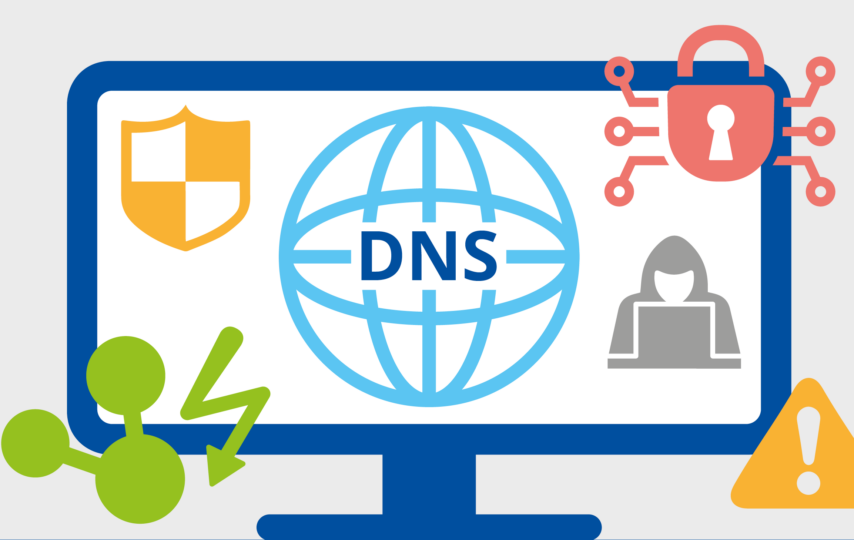The phonebook of the Internet is the Domain Name System (DNS). Humans access information online through domain names. Through Internet Protocol (IP) addresses, web browsers may communicate. DNS converts domain names to IP addresses for browsers to load Internet resources.
Each Internet-connected device has a different IP address that other computers can use to find the device. DNS servers take the place of the necessity for people to remember IP addresses like 192.168.1.1 (in IPv4) or more complicated modern alphanumeric IP addresses like 2400:cb00:20481:1::c629:d7a2(in IPv6).
Working of DNS
DNS resolution includes translating a hostname into an IP address that computers can understand. Each Internet-connected device has an IP address, which is required to identify the correct Internet device, much as a street address is required to identify a particular residence. A translation must occur between what users type into their web browser and the machine-friendly address necessary to find the webpage when they wish to load it.
Knowing the many hardware components a DNS query must transit through is essential to comprehending the method underlying DNS resolution. Apart from the initial request, the DNS lookup query for the web browser happens “behind the scenes” with no involvement from the user’s machine.
Servers that the DNS checker utilizes
Four separate categories of DNS servers are involved when running a DNS checker.
Recursive Resolver:
The recursive resolver, also known as the DNS server your device uses to connect to the internet, is provided automatically by your ISP but can also be set up on your router or specific devices. The DNS servers are perfectly situated near one another to deliver DNS checker results as quickly as feasible. These servers will cache a copy of the DNS result to expedite subsequent DNS checker lookup queries.
Root Name Server:
This kind of DNS server returns the IP address of the TLD (Top Level Domain) nameserver. The root name server, for instance, delivers the IP address of the TLD names server that manages.com domains when attempting to resolve an example.com.
TLD Name Server:
The authoritative name servers for each domain under the Top Level Domain for which it is accountable are returned by the name server. Example.org will not receive results from the.com TLD name server, but example.com will.
Authoritative Name Server:
This keeps track of each domain name’s DNS server configuration information.
What occurs after a request for a DNS checker?
The sequence of events when a person asks their web browser to visit www.example.com for the first time without cached results is shown below. Each step, as you can see, creates the potential for DNS propagation delay.
- Your web browser is opened, and you type www.example.com
- Your device requests the recursive resolver you’ve set up.
- The recursive resolver requests the IP address of the TLD nameserver in charge of.com domains from the root nameserver.
- The IP address of the nameserver for the.com TLD is retired to the recursive resolver by the root nameserver.
- The address of the authoritative nameserver in charge of example.com is requested by the recursive from the.com TLD nameserver.
- The IP address of the authoritative nameserver is retired to the recursive resolver by the.com TLD nameserver.
- The recursive resolver contacts the authoritative nameserver to obtain the site’s IP address.
- The recursive resolver receives the IP address of that domain from the authoritative nameserver.
- The browser receives the IP address of the given website from the recursive resolver.
- Direct web requests are sent from your browser to the determined IP address.
Types of DNS records can be examined.
Checking DNS propagation for popular record types like:
A: The most typical DNS entry directs a domain to an IPv4 address.
AAAA: The most typical DNS entry that directs a domain to an IPv6 address.
CNAME: They point to other hostnames and are also called alias records. Used occasionally for subdomains like www.
MX: Email servers and their priorities are established using mail exchange records.
NS: The authoritative nameserver is stored in name server records.
TXT: Configuration settings like SPF and DKIM records frequently use text records.
Additional types that can be examined include CAA, PTR, SOA, and SRV, frequently used in more complex configurations.
There are generally several different record kinds that you need to confirm are accurate while verifying DNS records. For Instance, email servers employ the MX record type, and websites occasionally use www or other subdomains as either an A or CNAME record.
Conclusion:
The hierarchical and decentralized naming scheme used to identify machines reachable over the Internet or other Internet Protocol networks is called the Domain Name System. People may enter common phrases into their browsers, thanks to DNS servers, saving them from having to remember the IP addresses of every website.







